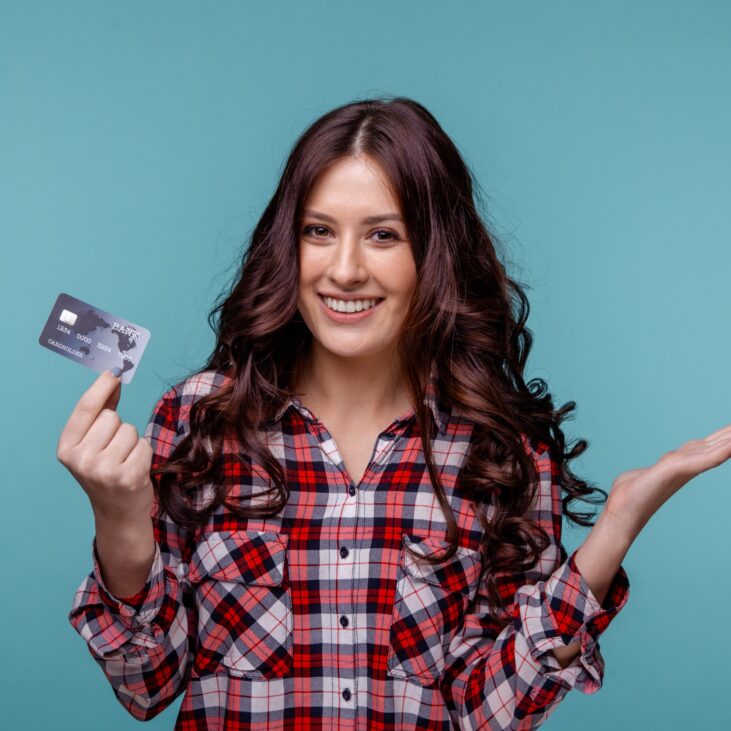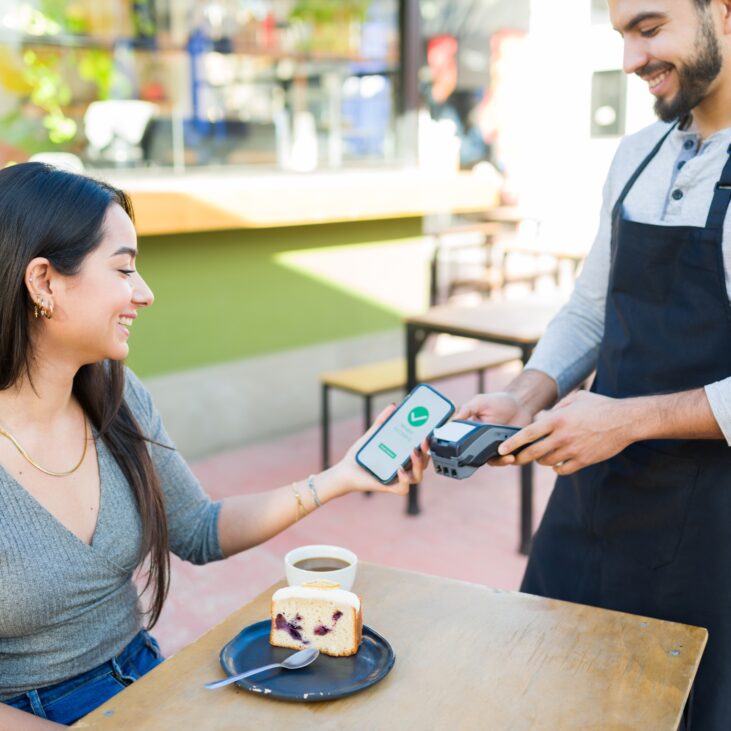Takeaways
- Most Americans have a checking or savings account at a bank or credit union.
- Checking accounts help facilitate day-to-day transactions.
- Checking accounts act as the central hub of an automated financial ecosystem.
- Checking accounts provide easy access to funds for quick transfers and withdrawals.
- FDIC-insured banks have insurance coverage on your deposits up to $250,000.
What is a Checking Account?
A checking account is a deposit account held at a bank that helps facilitate paying for day-to-day transactions. A Checking account gives you easy access to your cash and provides safekeeping at a bank or credit union. These bank accounts help you process regular deposits, withdrawals, ATM transactions, wires, transfers, and writing checks.
Opening a checking account is part of entering into the American economy. Roughly 81.5% of all U.S. households have a checking or savings account. And 97.3% use their bank to receive income or pay bills [1].
6 Steps to Open a Checking Account
A checking account is an essential component of your overall financial network. Selecting the best checking account will help you process payments quickly, efficiently, and automatically. Here are six steps to setting up a checking account:
1. Research the Best Checking Accounts
Choosing the best bank account is a critical part of the process. Research the different types of checking accounts to see which one fits your financial needs. Whether you are starting an online business, going to school, or seeking a higher interest on your checking account dictates the checking account you should open.
Smart Money -> Best Online Checking Accounts
2. Select Supporting Documents
Setting up a checking account should only take a couple of minutes. By gathering all the supporting documentation the bank or credit union needs to process your account, you can make the process even faster.
Many banks and credit unions have different requirements for documentation, so ensure that you are collecting everything your bank needs. There are substantial differences between U.S. citizens and non-U.S. citizens. Here is a list of the typical documentation needed to open a checking account:
- Identification: Your identification requirement can be handled with a valid:
- Driver’s license or government-issued photo
- Passport
- Birth Certificate
- Proof of Residence: To open a checking account, you need to show your name and the associated address of your current residence. You can fulfill this requirement with a valid:
- Mortgage Document
- Lease Agreement
- Utility Bill
- Credit Card Statement
Smart Money -> 7 Steps to Automate Your Finances
3. Choose a Checking Account
Not all checking accounts are the same. As part of your research, you should consider the benefits and disadvantages of each bank before choosing a checking account. Here are some factors to consider:
- Online vs. In-Person: Exclusively online banks will allow you to set up direct deposit, make electronic transfers, and do other transactions. However, with more brick-and-mortar locations with in-person banking, you have access to talk to tellers and bankers face-to-face. In-person banking can be convenient when you try to resolve an issue or have questions about savings accounts, credit cards, or mortgages.
- Checking Account Perks: Banking is a saturated industry. With so many banks competing to gain customers, some have resorted to offering perks to new and loyal customers. If you need to set up a new checking account, research banks that offer free checking, money orders, or ATM fees. This can help you avoid needless fees.
- ATM and Service Fees: Depending on the bank, you may have to pay monthly service or maintenance fees. Most checking accounts offer the ability to waive these fees, but they can be substantial if you don’t get them pardoned. Watch for out-of-network ATM fees from banks with few in-person branch locations and ATMs. Other expenses like overdrafts and miscellaneous fees can add up over time.
- Fund Access: The most helpful feature of a checking account is easy access to cash. Whether with a debit card, checks, or online payments, a checking account allows you to move funds quickly and cheaply. Weigh this when considering online-only accounts.
Smart Money -> Best Online Checking Accounts
4. Apply Online or In Person
To open a checking account, you must complete an application online or in person at a branch location. You can finish this process quickly with all the necessary documentation collected (discussed above). Most banks and credit unions will approve or deny your request in one to three business days. Once your formal application is submitted and approved, the next step is to fund your account.
Smart Money -> What is FDIC Insurance?
5. Transfer Starting Balance
After your checking account is open, many banks require an opening deposit. You can typically fund your account with a:
- Cash Deposit
- Checking Transfer
- Wire Transfer
Choose the best opening balance for your budgeting strategy. If this new checking account is the hub of your financial system, fund your account appropriately to begin making regular transactions out of your account to avoid any bank fees.
Smart Money -> Best High-Yield Online Savings Accounts
6. Start Banking
Once your checking account is set up and funded, you are free to begin using your account. Set up your debit card and start purchasing with the funds in your checking account. Ask your bank if you have specific questions and try to get the best financial products available.
Smart Summary
When you are opening a checking account for the first time, it is vital to remember your financial goals. Consider how you anticipate using your checking account. Think about all the perks, benefits, services, and features different banks offer as you compare options. Having a checking account as your central bank account is a smart money move. With a checking account, you can start working on forming good money habits.
Frequently Asked Questions
Yes. You should have a checking account that helps facilitate all your daily transactions – debit card purchases, checking writing, online banking transfers, and other everyday needs. You should have a savings account (high-yield savings accounts are better) for stashing your emergency and slush funds.
It depends on your financial situation, but finding one of the best checking accounts helps automate your finances. One checking account helps with streamlining your financial infrastructure. By choosing one checking account, you can facilitate direct paycheck deposits and automatic saving transfers, and bill payments.
[1] Federal Deposit Insurance Corporation (FDIC). 2021 FDIC National Survey of Unbanked and Underbanked Households. Last accessed September 4, 2023.









